A sliding door that grinds or sticks is frustrating. This daily annoyance signals a failing pulley. I can show you the simple fix to restore smooth operation.
First, remove the door from its track by lifting it up and out. Lay it flat, locate and unscrew the old pulley assembly at the bottom. Insert the new pulley, secure it with screws, and then carefully reinstall the door back onto the track.
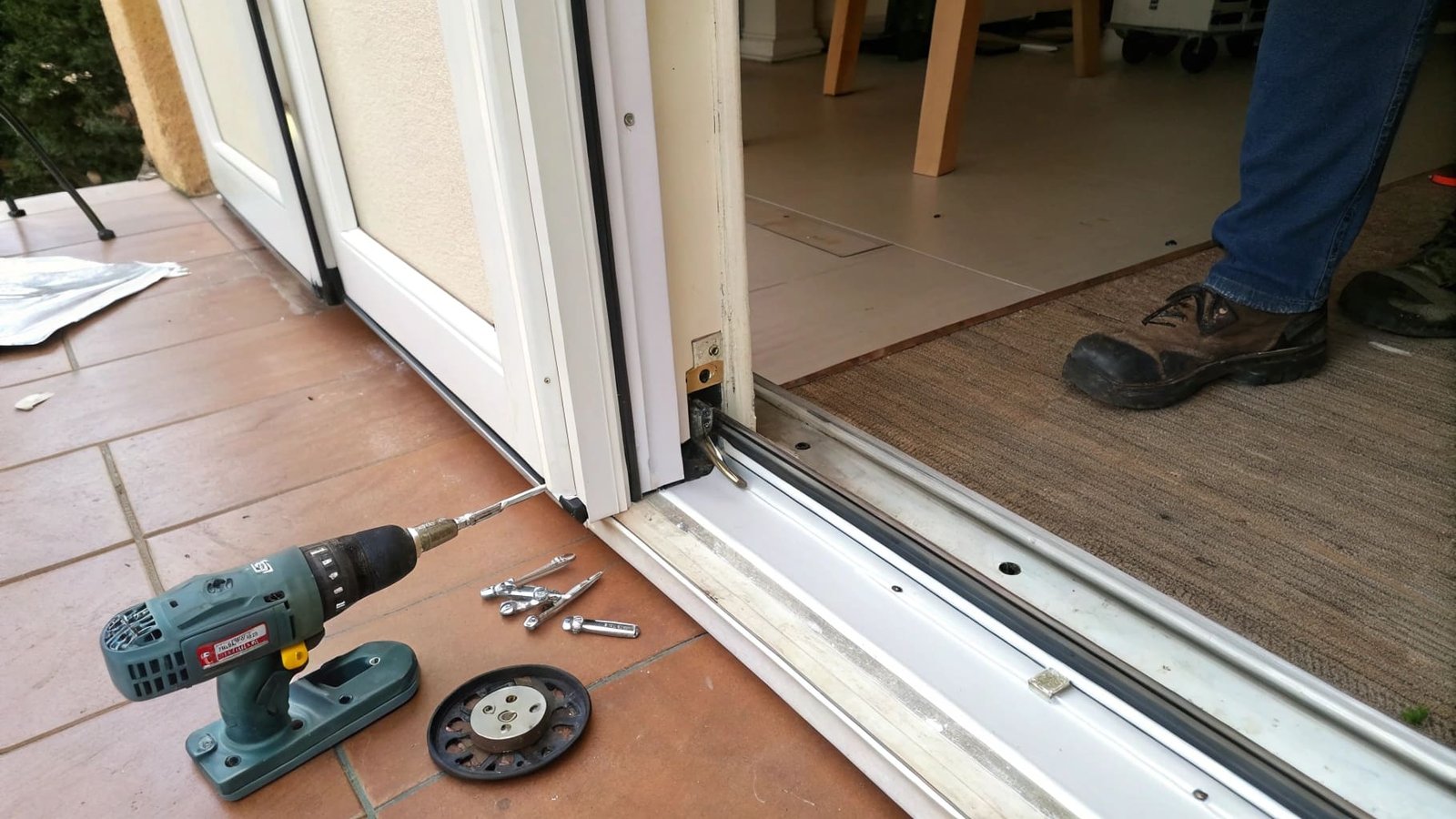
Replacing a pulley seems simple, but the details matter for a lasting repair. As a manufacturer at opensliding, I’ve seen many installations and repairs over the years. Getting the right parts is key for any repair project, whether you’re a contractor or a door factory. Let’s look at other common sliding door issues you might face, because often one problem can lead to another if not addressed correctly.
How to replace a sliding door keeper?
A door that won’t lock is a security risk. The keeper, the part on the jamb the lock engages with, is often the problem. Here’s the straightforward replacement process.
Unscrew the old keeper from the door jamb. Align the new keeper with the old screw holes and the door’s latch mechanism. You may need to adjust its position slightly for a secure fit. Screw the new keeper firmly into place and test the lock.
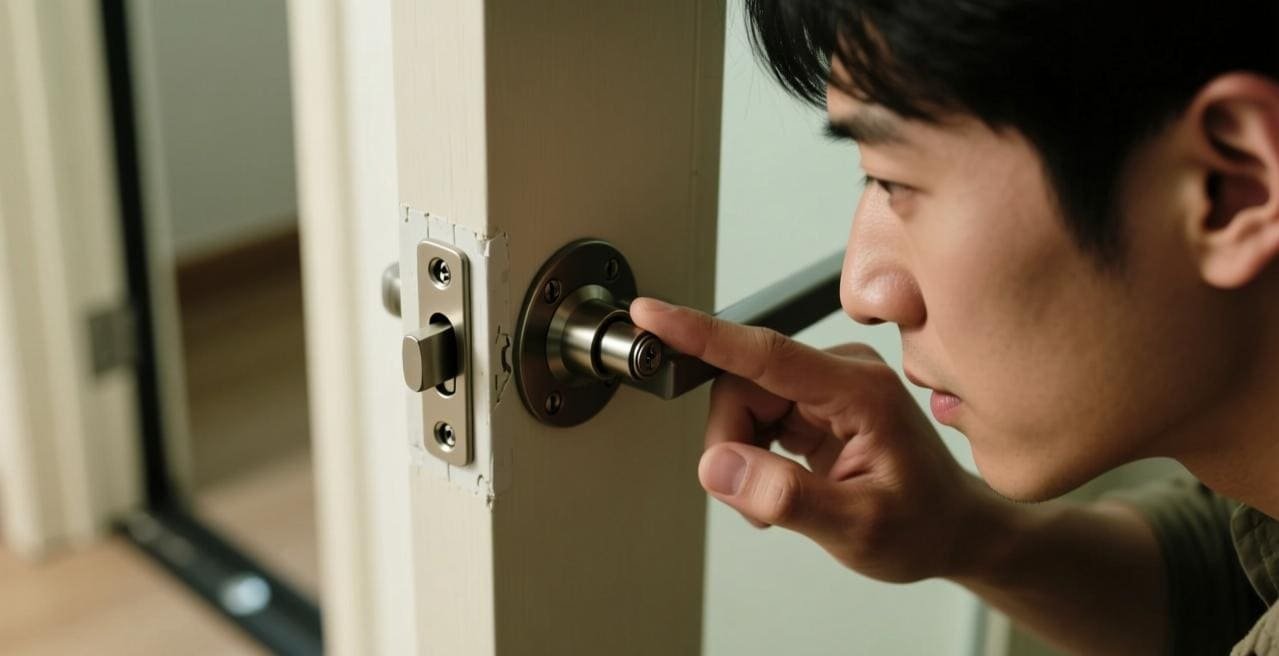
This seems like a simple part, but its quality and placement are critical. As a purchasing manager, you know that sourcing even small components like keepers can impact the final product’s security and feel. When we manufacture hardware at opensliding, we consider the material, the finish, and the precision of the screw holes. For your projects, ensure the replacement keeper matches the lock type and has the same screw pattern. This avoids drilling new holes in the frame. A perfect fit makes the door feel secure and operate smoothly, which reflects well on the final product you sell or install.
Key Considerations for Keepers
- Material: Choose a durable material. Stamped steel or die-cast zinc resists wear and tampering better than plastic.
- Alignment: Proper alignment is everything. If the latch doesn’t engage smoothly, the user experience is poor. Always test it multiple times after installation.
- Screws: Use the correct length and type of screw. Screws that are too short won’t be secure. Screws that are too long can damage the frame. We can supply these as a complete kit to avoid any guesswork.
How do I fix a broken sliding door?
Is your sliding door grinding, sticking, or misaligned? These problems ruin functionality. Don’t replace the whole unit; most issues have simple hardware fixes that save money and time.
First, identify the problem. Clean the track of all debris. If it still sticks, check the rollers for wear and replace them if needed. If the door is misaligned, adjust the roller height using the adjustment screws on the side of the door.
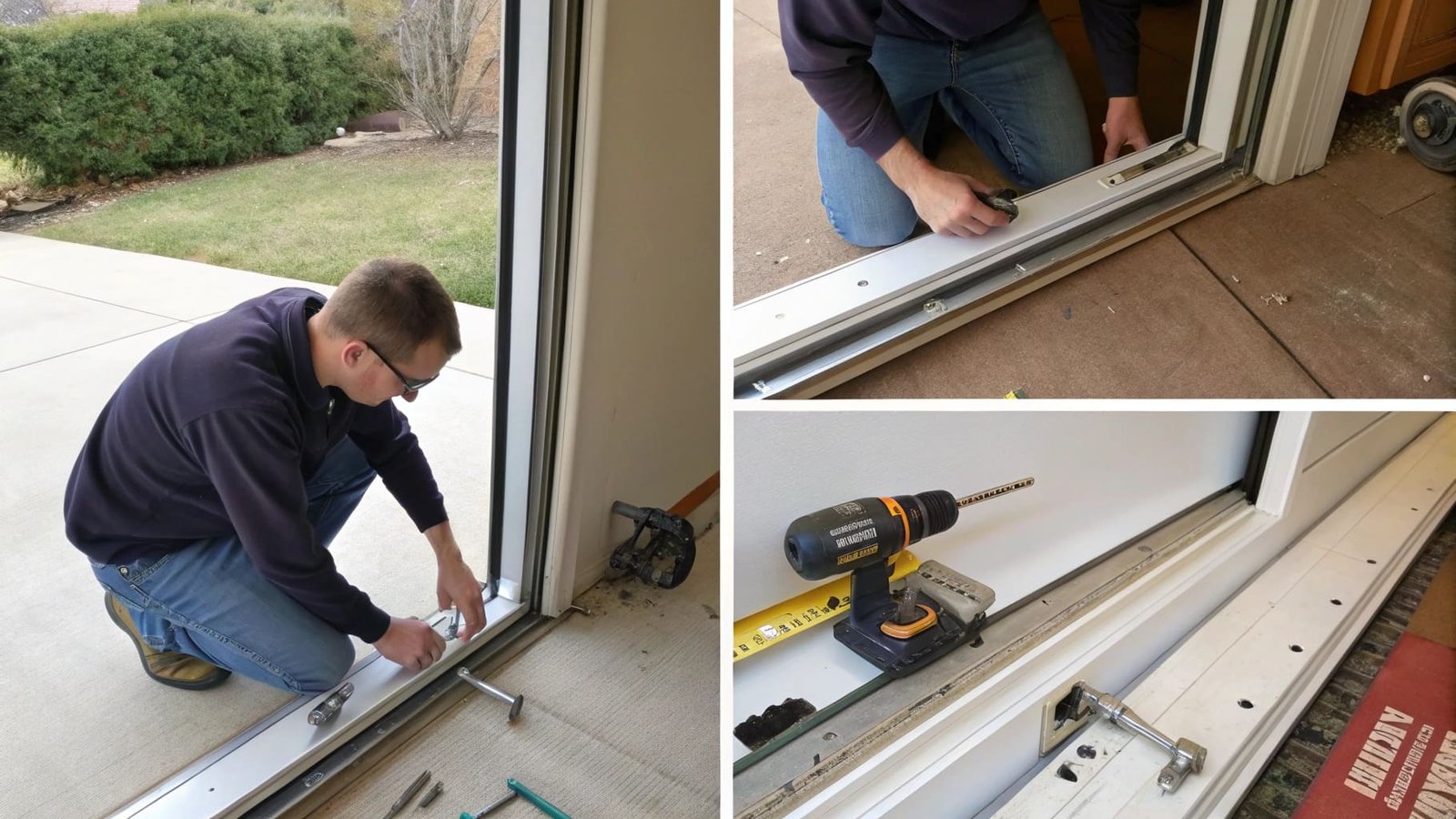
A "broken" sliding door is usually just a symptom of a failing component. From a procurement standpoint, understanding these failure points is key to sourcing better products. The most common issues I see are worn-out pulleys, a dirty or damaged track, and poor alignment. A systematic check saves a lot of headaches for your customers and reduces warranty claims for your business. Providing high-quality components from the start is the best strategy.
Common Sliding Door Problems and Fixes
- Grinding/Sticking: This is almost always the rollers or track. A simple cleaning can work temporarily. For long-term quality, sourcing high-performance, durable pulleys is the real answer. Our nylon or steel ball-bearing rollers ensure a smooth glide for years.
- Misalignment/Gaps: This is a roller height issue. Most doors have adjustment screws, usually accessible from the edge of the door. Turning them raises or lowers that corner of the door. This allows you to make it level and square within the frame, ensuring a good seal.
- Poor Latching: This could be a keeper issue, as we discussed, or it could be due to door alignment. A misaligned door won’t allow the lock to engage correctly. Fix the alignment first, then check the lock.
Can I replace a sliding door without replacing the frame?
Worried about a costly, messy project to replace a damaged sliding door? You dread having to tear out the entire frame. The good news is, you usually don’t have to.
Yes, in most cases, you can replace just the sliding door panel itself without replacing the entire frame. You just need to ensure the new door panel is the same size and is compatible with the existing track and hardware system.
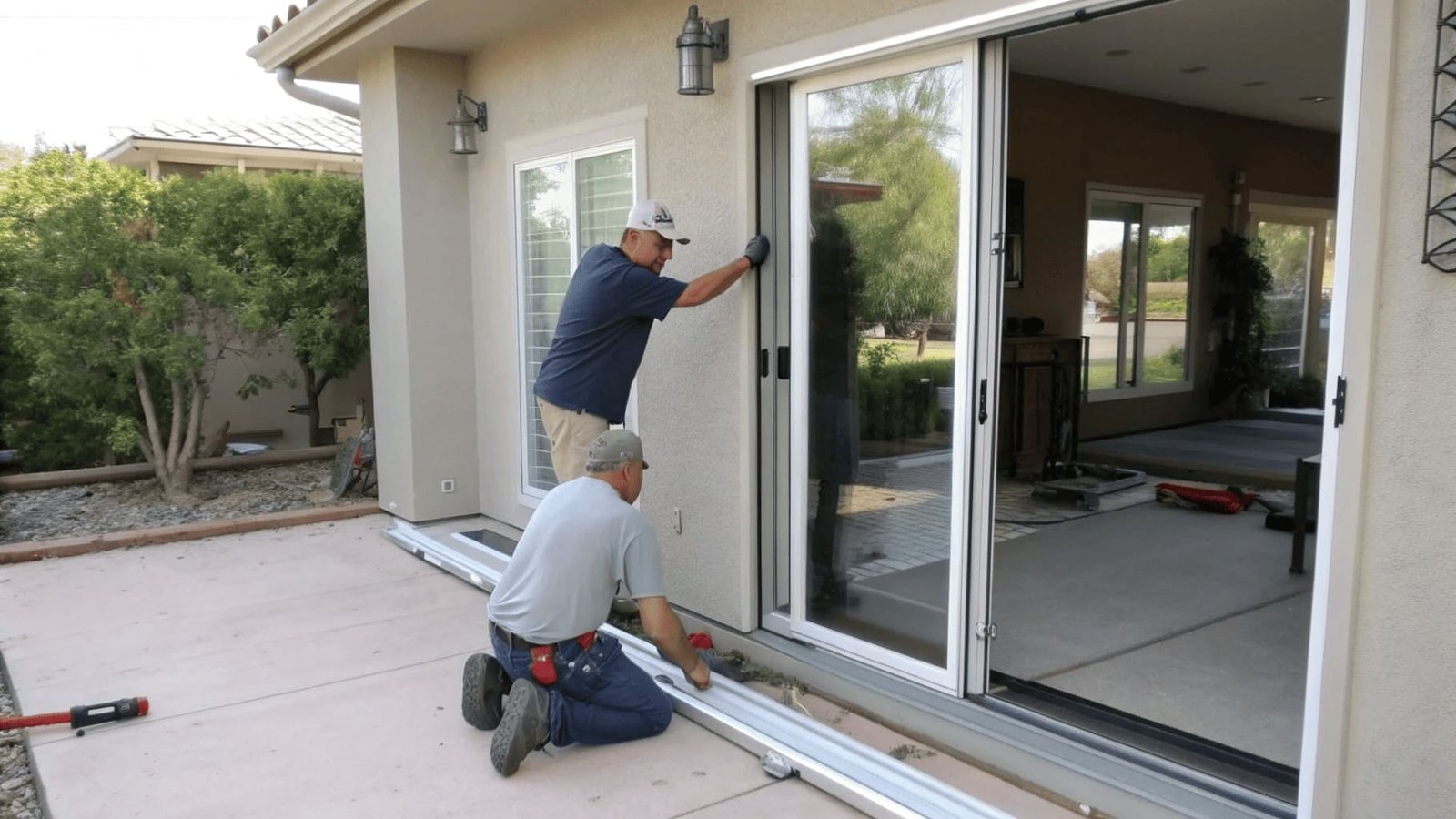
This is a very practical question for contractors and distributors. The ability to swap just the door panel saves immense labor and material costs. The critical factor is compatibility. As a B2B buyer like Jacky, when sourcing doors or hardware, understanding system standards is vital. If you can assure your customers that replacement parts are readily available and standardized, it adds significant value to your product line.
Compatibility Checklist for Door Panel Replacement
| Component | What to Check | Why It Matters |
|---|---|---|
| Dimensions | Height, width, and thickness of the panel. | The new panel must fit perfectly within the existing frame opening to operate and seal correctly. |
| Roller System1 | Type and position of the rollers. | The new door must use rollers compatible with the existing track. The pockets in the door for the rollers must align. |
| Locking System2 | Position of the handle, lock, and keeper. | The new door’s lock must align perfectly with the existing keeper on the door jamb to ensure security. |
| Interlock | The weatherstripping where two panels meet. | This channel must match the existing stationary panel to create a proper weather-tight seal. |
At opensliding, we manufacture hardware systems that are often standardized. This makes replacements easier for our clients’ customers down the line.
Can you replace just the handle on a sliding glass door?
A broken or outdated handle ruins the look and function of your sliding door. You might think you need a whole new door. But a simple handle replacement can solve the problem.
Absolutely. You can replace just the handle set. You’ll need to know the hole spacing, which is the distance between the screw holes, and the type of lock mechanism to find a compatible replacement. Most replacements are straightforward.
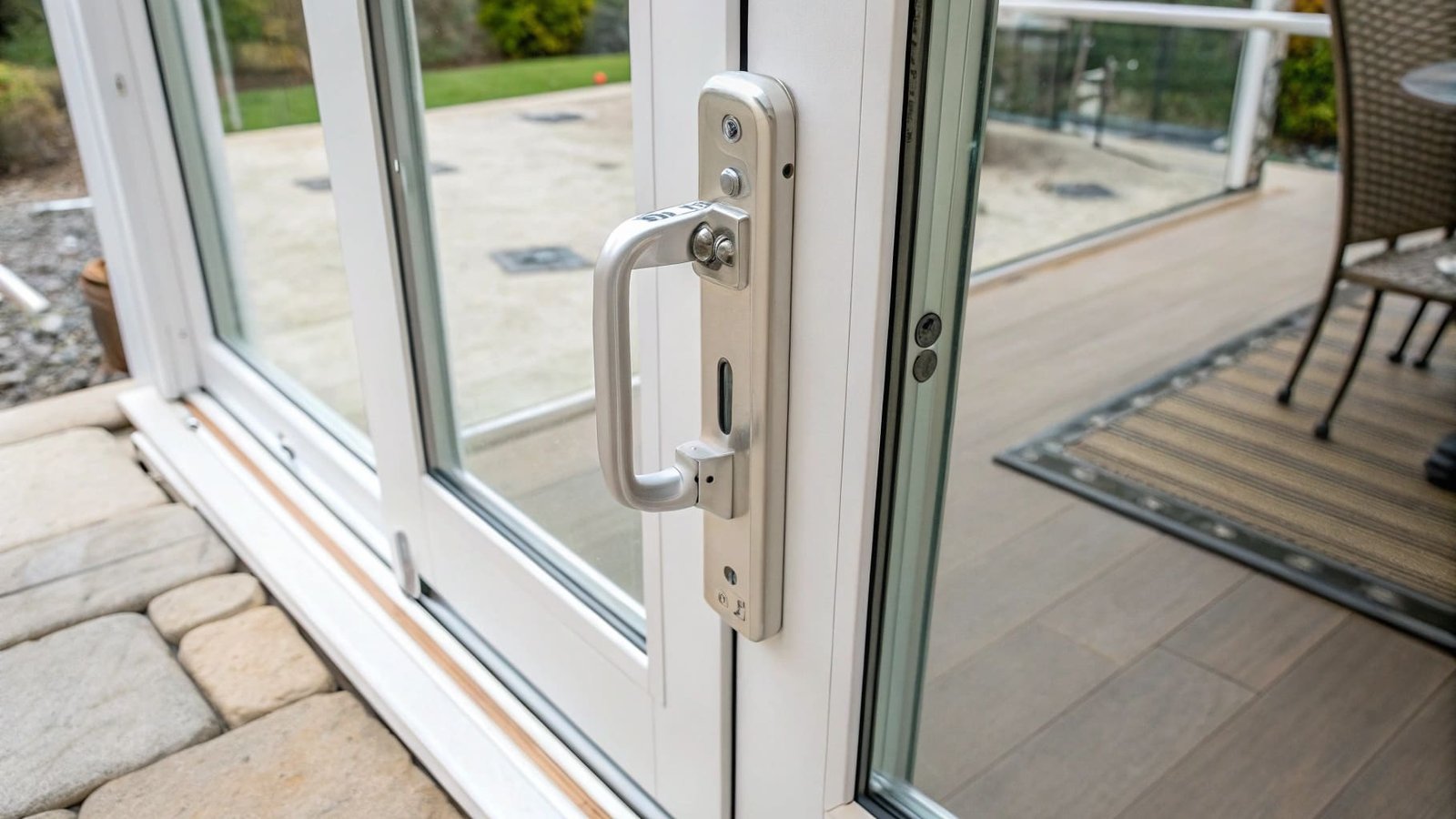
Handles are a high-touch point. Their quality directly impacts the user’s perception of the entire door unit. For a purchasing professional, sourcing handles involves more than just looks. You need to consider durability, ergonomics, and installation ease. The key measurement is the center-to-center screw hole spacing. Common sizes are 3-15/16 inches or 4-15/16 inches, but many other sizes exist. Getting this right is the most important step.
Sourcing the Right Handle
- Measure First: Always measure the distance from the center of the top screw to the center of the bottom screw. This is the most critical measurement for finding a replacement.
- Lock Type3: Identify the lock mechanism. Is it a mortise lock that fits into a pocket in the door edge? Or is it a surface-mount hook lock? The new handle must work with the existing lock.
- Material & Finish4: We offer handles in various materials like aluminum, zinc, and stainless steel, with many finishes to match any decor. Offering a range of high-quality, customizable options can be a key selling point for your business. We can even add your company logo.
Conclusion
Replacing broken sliding door parts like pulleys, keepers, or handles is a cost-effective solution. With the right components and simple steps, you can restore any door to perfect working order.
Understanding the roller system is crucial for ensuring compatibility and smooth operation of your new door. ↩
Exploring the locking system’s role can help you enhance the security of your door replacement. ↩
Understanding lock types is essential for selecting the right handle, ensuring compatibility and security. ↩
Exploring materials and finishes helps you choose durable and stylish handles that enhance your decor. ↩

